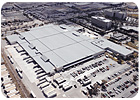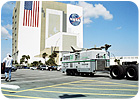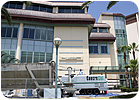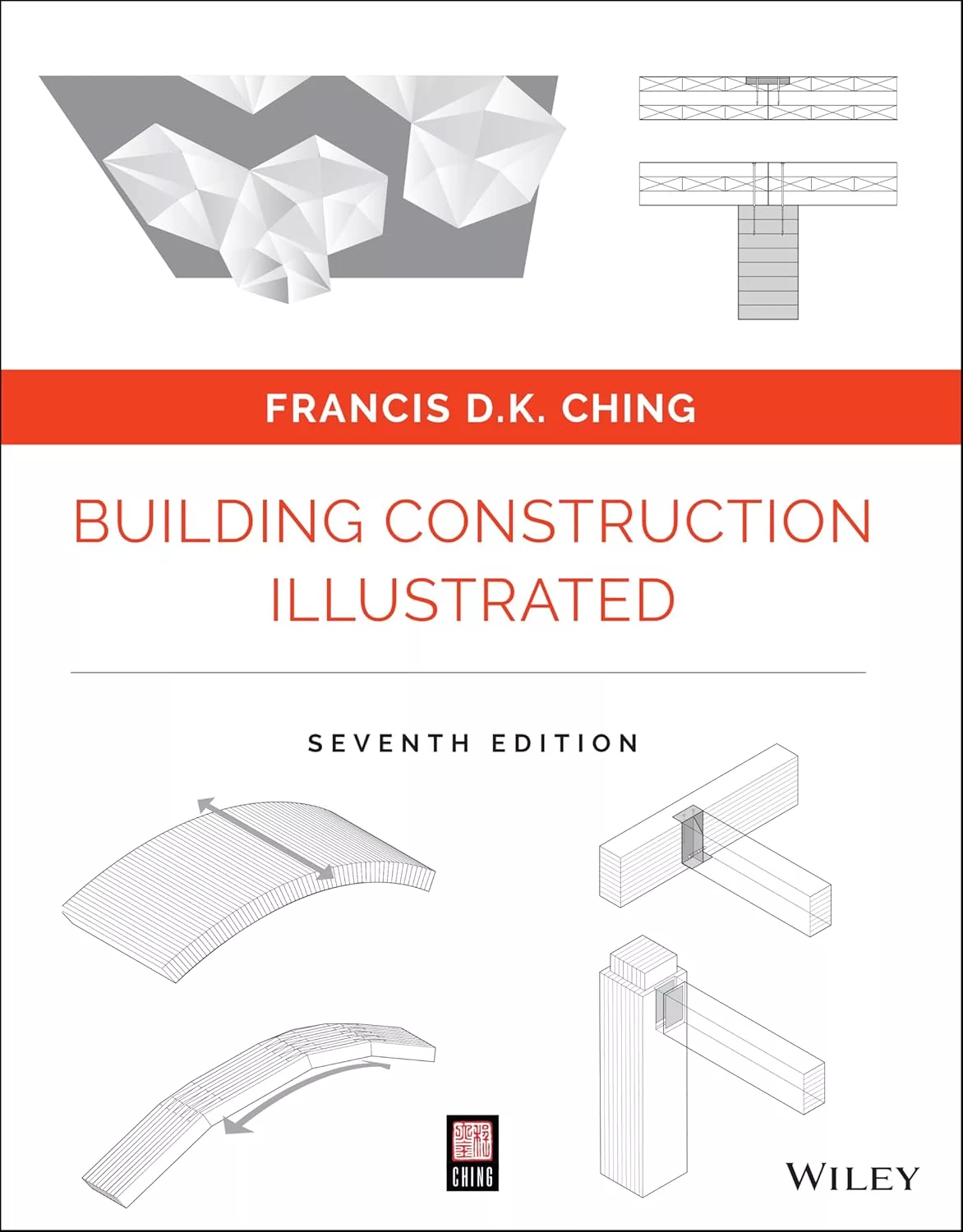New Lightweight Concrete Technology
The use of lightweight concrete as a roof decking and insulation system has expanded in the past five years. Increased usage can be attributed to the recent industry-wide insulation shortages and delamination deficiencies. The increase can also be attributed to the economic and environmental advantages that lightweight insulating concrete (LWIC) provides in roof assemblies. The increased use in specific regions of the country has spawned new technology to meet the demands of the market from the economic and environmental standpoints. Advances in pumping equipment and mixing ratios have provided materials that are consistent in compressive strength and density.

The use of lightweight concrete as a roof decking and insulation system has expanded in the past five years. Increased usage can be attributed to the recent industry-wide insulation shortages and delamination deficiencies. The increase can also be attributed to the economic and environmental advantages that lightweight insulating concrete (LWIC) provides in roof assemblies. The increased use in specific regions of the country has spawned new technology to meet the demands of the market from the economic and environmental standpoints. Advances in pumping equipment and mixing ratios have provided materials that are consistent in compressive strength and density.

In addition, lightweight concrete provides the building owner with long-term cost savings. Since the lightweight construction becomes part of the structure, replacement is not required during remedial roofing applications, as is the case with insulation. Rather, only the membrane removal is required. This frees space in landfills and substantially reduces removal costs, which can be as high as 50 percent of the total project costs.
In overall construction practices, lightweight concrete is used to reduce the dead load of a structure. The decrease of the dead load allows the designer to save costs through reduction in the size of the columns, footings and other load-bearing elements. The decrease in size does not decrease strength. Lightweight concrete can achieve similar strengths as standard concrete, and it produces a more efficient strength-to-weight ratio in structural elements.
Lightweight concrete derives its name from the fact that standard concrete typically weighs about 150 pounds per cubic yard, whereas lightweight concrete could weigh in the range of 90 to 120 pounds per cubic yard. Insulated lightweight concrete could weigh in the range of 20 to 70 pounds per cubic yard.
The primary factor in decreasing the weight per cubic yard is that aggregate - a mainstay in standard concrete - is omitted from most lightweight concrete compositions. Lightweight concrete used in roof deck construction typically consists of Portland cement, foam, water, and admixtures. Lightweight insulating concrete includes the application of expanded polystyrene (EPS) insulation boards. The EPS insulation must have a minimum density of 1 pound per cubic foot and have keyholes properly spaced throughout the boards for concrete flow through the boards.
Lightweight concrete is typically applied as composite slabs over vented metal decks that meet the requirements of ASTM A653 and are of the proper type and gauge to withstand the structural live and dead loads for the facility. Lightweight concrete can also be applied as a topping slab over structural concrete decks. In LWIC applications, the EPS board is set in a slurry coat of lightweight concrete and allowed to set up for up to 24 hours. The lightweight concrete is then poured over the EPS on the following day. The thickness and density of the lightweight pour depends on slope factors and height requirements at existing penetrations, flashings and perimeter edges. The lightweight concrete pour is typically a minimum of 2 inches when it is applied over the EPS board.

One of the major disadvantages of lightweight concrete has been the inability to provide consistent compressive strengths and density throughout the entire area. Lightweight concrete derives its compressive strength from the molecules in the foam additive that - when properly mixed - form around the cement and serve as aggregate does in standard concrete mixes. If the foam additive is not properly mixed, there is a probability of foam collapse, which weakens the product’s compressive strength.
A contributing factor of failure has been that the mixes are compiled by hand at the jobsite and are thus prone to human error. To eliminate this problem, Concrecel USA® has developed new pumping equipment that accurately weighs the ingredients and mixes the foam and cement through equal spacing to achieve a consistently blended batch every time. Concrecel USA has national and international patents and patents pending on the pumping equipment.

The high compressive strength is produced by a combination of the consistent mix and a low water-to-cement ratio. “We use less water per mix than other lightweight insulating concretes,” stated Gembala. “This allows the moisture content to reach ambient equilibrium in less than 14 days. We have had projects were it reached equilibrium within six days.” The low water content also provides higher bond strength to other surfaces, such as metal and concrete decks.
The pumping equipment is fully automated. It measures the foam and weighs the cement and is housed in a safe self-contained unit. According to John Nocella of Concrecel USA, “We believe that this is a revolutionary self-contained concrete mixer, foam generator and pump housed in a Department of Transportation-approved mobile application system.” The pumping equipment has a high yield and the capacity to produce 50 percent more product than competitors’ pumps, allowing for double the productivity on the job while producing up to 65 batches per hour. The foam used is of high quality and is environmentally safe, according to the company.
The equipment is designed with maintenance in mind. “If there is a malfunction, the equipment is set up for quick repairs,” Nocella said. “It can be field maintained with virtually no project downtime.”
The testing concluded that although there were similarities in the sample mixes and the concrete structure appeared good in both samples, there were some differences. The testing agency found discrepancies in the competitor’s sample (fractures and voids) that could contribute to failure. James Hubbard, the senior consultant of MAGI, reported, “The problem sample has a lower density than the good product and the size of the voids produced by the foam introduced into the product is such that the problem sample has a thinner concrete wall between the voids.” The Concrecel sample illustrated consistency in foam distribution and there were no voids. The competitor’s sample illustrated an even distribution of void sizes throughout the sample. According to Hubbard, “The void distribution at the top surface of the problem sample leaves a thin surface layer that is weak compared to the good sample.” Test results revealed that the thickness and the density of the concrete in the Concrecel sample remained consistent throughout.
Concrecel USA has joined with the developers of a metal blocking system (ARBS) and Advanced Roof Systems to promote roof assemblies that meet high-velocity wind conditions. Gembala feels that the association of roof systems incorporating lightweight insulating concrete, ARBS blocking and Advanced Roof Systems’ workmanship will provide the necessary attachment requirements to meet the most stringent high-velocity wind codes. The focus of the product and system development has been to minimize the exposure to roof damage for insurance companies and building owners. “ARBS has been on the Florida and Caribbean markets for the past five years and has not experienced any damage from the recent hurricanes,” Gembala states. Gembala also notes that Concrecel USA is open to working with other roof membrane manufacturers in the continuation of the system development. “We are committed to continual implementation of new products and application methods and we welcome other manufacturers participation with the program.”
Concrecel USA also intends to expand its contractor base in 2007. The company is currently working with two Florida-based contractors on a pilot program. Each of the contractors has completed over $5 million a year in Concrecel USA system applications. “The success of the pilot program has provided incentive to expand the program into other regions,” Gembala says.
Beginning at the International Roofing Expo in March, Concrecel USA will be seeking a limited number of proven contractors throughout the costal regions from New York to California to be part of a network of applicators. Gembala is quick to point out that “expansion into Middle America will also be considered if the interest is there.”
Approved applicators will be provided with the patented lightweight pump equipment and application rights for all associated products and systems. Through their headquarters in Florida, Concrecel USA will furnish the applicators with all technical and training requirements. Concrecel USA will also provide a centralized ordering system for all materials, parts and system components. This will help reduce material costs from price breaks obtained through bulk ordering. The company has also set up an estimating department that will be helping the applicators obtain projects in their regions. For more information about Concrecel USA, call 866-981-5942 or visit www.concrecelusa.com.
The advancements in lightweight pumping equipment that Concrecel USA has developed will be a benefit to the industry. As Concrecel USA and other lightweight concrete manufacturers strive for technological advancements, the resulting competition will provide lightweight concrete that is consistent in density and strength. As the product improves, use will increase, to the benefit of building owners, contractors, and the roofing industry.

The use of lightweight concrete as a roof decking and insulation system has expanded in the past five years. Increased usage can be attributed to the recent industry-wide insulation shortages and delamination deficiencies. The increase can also be attributed to the economic and environmental advantages that lightweight insulating concrete (LWIC) provides in roof assemblies. The increased use in specific regions of the country has spawned new technology to meet the demands of the market from the economic and environmental standpoints. Advances in pumping equipment and mixing ratios have provided materials that are consistent in compressive strength and density.

Concrecel USA® has developed patented pumping equipment that accurately weighs the ingredients and mixes the foam and cement to achieve consistently blended batches of lightweight concrete.
Advantages
There are several benefits for the use of lightweight concrete on current roof applications. When provided with insulation, a thermal R-value of R-30 can be easily achieved without insulation delamination, warping or attachment concerns. The lightweight concrete also provides a sound substrate for membrane application, and it can be formed to achieve proper slope without adding costly and complicated tapered insulation. It also provides a higher fire rating for the system.In addition, lightweight concrete provides the building owner with long-term cost savings. Since the lightweight construction becomes part of the structure, replacement is not required during remedial roofing applications, as is the case with insulation. Rather, only the membrane removal is required. This frees space in landfills and substantially reduces removal costs, which can be as high as 50 percent of the total project costs.
In overall construction practices, lightweight concrete is used to reduce the dead load of a structure. The decrease of the dead load allows the designer to save costs through reduction in the size of the columns, footings and other load-bearing elements. The decrease in size does not decrease strength. Lightweight concrete can achieve similar strengths as standard concrete, and it produces a more efficient strength-to-weight ratio in structural elements.
Lightweight concrete derives its name from the fact that standard concrete typically weighs about 150 pounds per cubic yard, whereas lightweight concrete could weigh in the range of 90 to 120 pounds per cubic yard. Insulated lightweight concrete could weigh in the range of 20 to 70 pounds per cubic yard.
The primary factor in decreasing the weight per cubic yard is that aggregate - a mainstay in standard concrete - is omitted from most lightweight concrete compositions. Lightweight concrete used in roof deck construction typically consists of Portland cement, foam, water, and admixtures. Lightweight insulating concrete includes the application of expanded polystyrene (EPS) insulation boards. The EPS insulation must have a minimum density of 1 pound per cubic foot and have keyholes properly spaced throughout the boards for concrete flow through the boards.
Lightweight concrete is typically applied as composite slabs over vented metal decks that meet the requirements of ASTM A653 and are of the proper type and gauge to withstand the structural live and dead loads for the facility. Lightweight concrete can also be applied as a topping slab over structural concrete decks. In LWIC applications, the EPS board is set in a slurry coat of lightweight concrete and allowed to set up for up to 24 hours. The lightweight concrete is then poured over the EPS on the following day. The thickness and density of the lightweight pour depends on slope factors and height requirements at existing penetrations, flashings and perimeter edges. The lightweight concrete pour is typically a minimum of 2 inches when it is applied over the EPS board.

Lightweight concrete, like that used on this Miami postal facility, not only provides a sound substrate for membrane application, but it can be formed to achieve proper slope without adding tapered insulation.
Disadvantages
Lightweight concrete applications do have limitations and associated liabilities. The system is installed on site and a successful application depends on the skill of the installing contractor. As with all site-installed materials, the quality of the finished product is based on the skill level of the applicator. Lightweight concrete has additional constraints because the success of the system is based on the proper mix ratio. An improper mix can create voids in the concrete that lead to deficiencies.One of the major disadvantages of lightweight concrete has been the inability to provide consistent compressive strengths and density throughout the entire area. Lightweight concrete derives its compressive strength from the molecules in the foam additive that - when properly mixed - form around the cement and serve as aggregate does in standard concrete mixes. If the foam additive is not properly mixed, there is a probability of foam collapse, which weakens the product’s compressive strength.
A contributing factor of failure has been that the mixes are compiled by hand at the jobsite and are thus prone to human error. To eliminate this problem, Concrecel USA® has developed new pumping equipment that accurately weighs the ingredients and mixes the foam and cement through equal spacing to achieve a consistently blended batch every time. Concrecel USA has national and international patents and patents pending on the pumping equipment.

The Concrecel USA pumping equipment is fully automated and self-contained. It measures the foam and weighs the cement, and it has the capacity to produce up to 65 batches per hour.
New Technology
The importance of the pour consistency is determined in fastener pullout tests that are required to determine the holding strength of the lightweight concrete. David Gembala, the president of Concrecel USA, explained that the consistency of the mix provided by his company’s technology provides outstanding pullout values. “Within 12 hours (not the industry standard 36 hours), the Concrecel USA lightweight can reach pullout values of 100 pounds,” he said, noting that the industry requirement is 45 pounds after 36 hours. Concrecel USA has reached 200 pounds after 24 to 36 hours, he notes.The high compressive strength is produced by a combination of the consistent mix and a low water-to-cement ratio. “We use less water per mix than other lightweight insulating concretes,” stated Gembala. “This allows the moisture content to reach ambient equilibrium in less than 14 days. We have had projects were it reached equilibrium within six days.” The low water content also provides higher bond strength to other surfaces, such as metal and concrete decks.
The pumping equipment is fully automated. It measures the foam and weighs the cement and is housed in a safe self-contained unit. According to John Nocella of Concrecel USA, “We believe that this is a revolutionary self-contained concrete mixer, foam generator and pump housed in a Department of Transportation-approved mobile application system.” The pumping equipment has a high yield and the capacity to produce 50 percent more product than competitors’ pumps, allowing for double the productivity on the job while producing up to 65 batches per hour. The foam used is of high quality and is environmentally safe, according to the company.
The equipment is designed with maintenance in mind. “If there is a malfunction, the equipment is set up for quick repairs,” Nocella said. “It can be field maintained with virtually no project downtime.”
LWIC Testing
In 2004, Concrecel USA sent samples of different lightweight pours to the Material Analysis Group Inc. in Suwanee, Ga., for product comparisons. A sample of Concrecel USA’s pour, in block form, was sent with a sample of a competitor’s pour. The materials (LW blocks) were not identified so that testing personnel remained unbiased throughout the test procedures. The samples of both materials were examined using an optical microscope and a scanning electron microscope (SEM) and analyzed for elemental content in the SEM using energy dispersive X-ray (EDX) spectroscopy.The testing concluded that although there were similarities in the sample mixes and the concrete structure appeared good in both samples, there were some differences. The testing agency found discrepancies in the competitor’s sample (fractures and voids) that could contribute to failure. James Hubbard, the senior consultant of MAGI, reported, “The problem sample has a lower density than the good product and the size of the voids produced by the foam introduced into the product is such that the problem sample has a thinner concrete wall between the voids.” The Concrecel sample illustrated consistency in foam distribution and there were no voids. The competitor’s sample illustrated an even distribution of void sizes throughout the sample. According to Hubbard, “The void distribution at the top surface of the problem sample leaves a thin surface layer that is weak compared to the good sample.” Test results revealed that the thickness and the density of the concrete in the Concrecel sample remained consistent throughout.
Concrecel USA
Concrecel USA has obtained approvals from Factory Mutual, Underwriters Laboratories and Miami-Dade County. The focus of the company has been on product development. The company was formed by experienced roofing contractors and lightweight concrete experts with a combined industry experience level of over 200-plus years. In the past 25 years, the company has maintained its commitment to providing revolutionary high-quality products that have been developed through extensive research and development. “Research and development is continually ongoing, and new product development is the core emphasis of the company,” said Gembala.Concrecel USA has joined with the developers of a metal blocking system (ARBS) and Advanced Roof Systems to promote roof assemblies that meet high-velocity wind conditions. Gembala feels that the association of roof systems incorporating lightweight insulating concrete, ARBS blocking and Advanced Roof Systems’ workmanship will provide the necessary attachment requirements to meet the most stringent high-velocity wind codes. The focus of the product and system development has been to minimize the exposure to roof damage for insurance companies and building owners. “ARBS has been on the Florida and Caribbean markets for the past five years and has not experienced any damage from the recent hurricanes,” Gembala states. Gembala also notes that Concrecel USA is open to working with other roof membrane manufacturers in the continuation of the system development. “We are committed to continual implementation of new products and application methods and we welcome other manufacturers participation with the program.”
Concrecel USA also intends to expand its contractor base in 2007. The company is currently working with two Florida-based contractors on a pilot program. Each of the contractors has completed over $5 million a year in Concrecel USA system applications. “The success of the pilot program has provided incentive to expand the program into other regions,” Gembala says.
Beginning at the International Roofing Expo in March, Concrecel USA will be seeking a limited number of proven contractors throughout the costal regions from New York to California to be part of a network of applicators. Gembala is quick to point out that “expansion into Middle America will also be considered if the interest is there.”
Approved applicators will be provided with the patented lightweight pump equipment and application rights for all associated products and systems. Through their headquarters in Florida, Concrecel USA will furnish the applicators with all technical and training requirements. Concrecel USA will also provide a centralized ordering system for all materials, parts and system components. This will help reduce material costs from price breaks obtained through bulk ordering. The company has also set up an estimating department that will be helping the applicators obtain projects in their regions. For more information about Concrecel USA, call 866-981-5942 or visit www.concrecelusa.com.
The advancements in lightweight pumping equipment that Concrecel USA has developed will be a benefit to the industry. As Concrecel USA and other lightweight concrete manufacturers strive for technological advancements, the resulting competition will provide lightweight concrete that is consistent in density and strength. As the product improves, use will increase, to the benefit of building owners, contractors, and the roofing industry.
Links
Looking for a reprint of this article?
From high-res PDFs to custom plaques, order your copy today!





